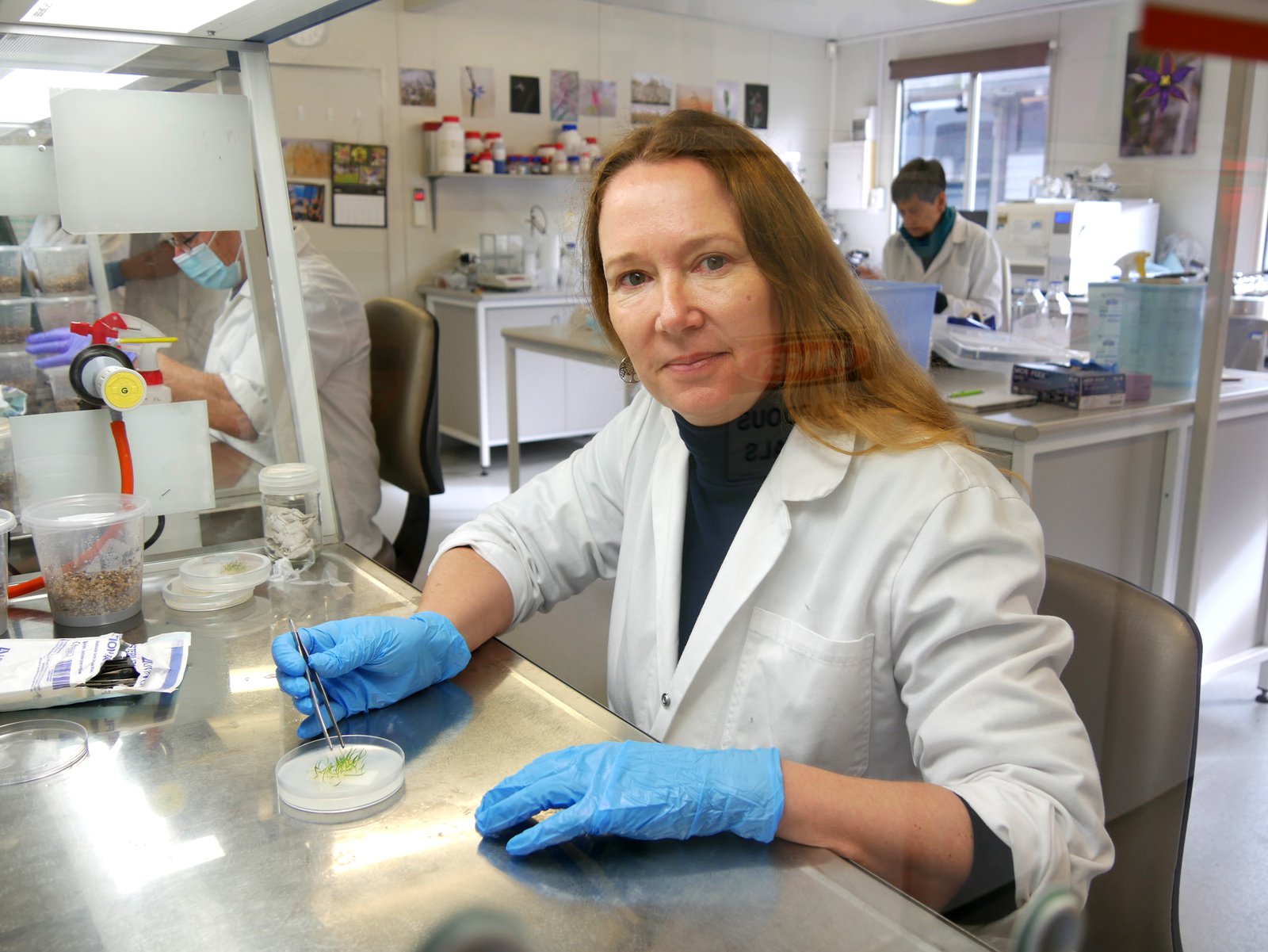Safeguarding Australia's unique botanical diversity
Who Dr Noushka Reiter, Royal Botanic Gardens Victoria
What Dr Noushka Reiter leads an internationally recognised orchid conservation program, which has bolstered the populations of 14 endangered species by up to 260%. Using innovative methods to study pollinators and symbiotically propagate over 20,000 plants across 80 endangered species, her work safeguards Australia's unique botanical diversity, providing a blueprint for global plant conservation.
Winner of the 2023 Australian Institute of Botanical Science Eureka Prize for Excellence in Botanical Science

Dr Noushka Reiter leads an internationally recognised orchid conservation program, which has bolstered the populations of 14 endangered species by up to 260%.
Image: Supplied© Royal Botanic Gardens Victoria
You’ve built a career around orchid conservation. What initially attracted you to this space?
As a child my parents often took us camping, sometimes we went on adventures around Australia or interstate to explore national parks and Australia’s amazing natural history. This fostered a love of the natural world and conserving it.
Can you tell us a little bit about the causes of orchid decline and the scale at which you’re witnessing it?
Unfortunately, orchids feature prominently as some of the most threatened plant species, both in Australia and overseas. Due to their unique biological requirements, they’re reliant on many factors in our environment to thrive. Most orchids depend on only one or a few pollinator species, have an obligate relationship with mycorrhizal fungi (fungi that have a symbiotic relationship with the roots of many plants) for germination and often have very particular habitat requirements.
Almost two hundred species unique to Australia are threatened with extinction and many more are in severe decline.
Since European invasion of Australia, large-scale habitat destruction has seen many once-common Australian orchid species pushed to the brink of extinction. Almost two hundred species unique to Australia are threatened with extinction and many more are in severe decline. Habit destruction, combined with habitat degradation through introduced weeds and animals, has further impacted these species and their pollinators.
The orchid conservation program you run has been incredibly effective. What underpins its success?
There has been solid applied research into the ecology of each of the species we work with. This includes developing an understanding of the pollinators and their distribution, the mycorrhizal associations, symbiotic propagation methods and specific habitat needs. We also monitor translocation (the movement of plants grown in the nursery back into the wild) outcomes for each species and perform demographic analysis, which informs and improves future translocations. The success of both applied research and translocation has been underpinned by large-scale symbiotic propagation of the orchids.
The program’s success can also be attributed to the enthusiasm and dedication of the many volunteers and organisations who have been involved with it over the years. Volunteers, for example, play a huge role in the program — they are involved in every aspect of it, helping in the laboratory and nursery, and helping plant endangered species back into the wild. I find their dedication inspiring!

Using innovative methods to study pollinators and symbiotically propagate over 20,000 plants across 80 endangered species, Noushka’s work safeguards Australia's unique botanical diversity, providing a blueprint for global plant conservation.
Image: Royal Botanic Gardens Victoria© Royal Botanic Gardens Victoria
What are some of the broader impacts you hope to see from your work, beyond orchid conservation?
I hope that this work will inspire the community and next generation to conserve threatened plants. I’d also like to see the applied methods we’ve developed to conserve and introduce orchids used more broadly to conserve and translocate other threatened plants. In the process of understanding the ecology of each of these species, it’s also my hope that we’ll discover new species of fungi and pollinators, and uncover insights into previously unknown pollination strategies.

Noushka (right) with Denise Ora, Chief Executive, Australian Institute of Botanical Science and Botanic Gardens of Sydney, at the 2023 Eureka Prizes Award Ceremony.
Image: Tim Levy© Australian Museum
What does winning a Eureka Prize mean to you?
I’ve worked on this conservation program for 15 years, largely funding both wages and consumables through grants and donations . My lab is an old portable that we refitted nine years ago using donations. Most of the time I’m head down, beavering away on conserving species in the lab nursery and field with volunteers, students, and colleagues. I often wonder how we’ll fund the conservation of these species into the future, so it was a surprise to even be considered for this Eureka Prize and heart-warming to receive it. To be honest, it was a very emotional experience! It’s fantastic to see the conservation of some of our most threatened plants recognised by this award.
The Australian Museum Eureka Prizes are the country’s most comprehensive national science awards, honouring excellence across the areas of research & innovation, leadership, science engagement, and school science.

